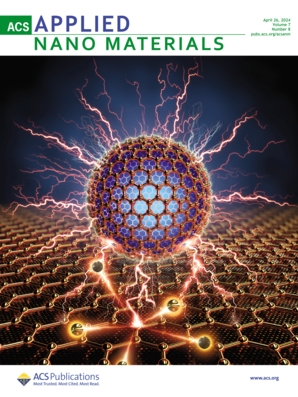熔融-电写入三维解剖学相关支架,在体外再造胰腺尖状体单元
IF 5.5
2区 材料科学
Q2 MATERIALS SCIENCE, MULTIDISCIPLINARY
引用次数: 1
摘要
熔融电写(MEW)属于先进的增材制造技术,由计算机辅助设计(CAD)辅助聚合物挤出与高压电源相结合,实现直径在微米范围(1 至 20 微米)内的聚合物纤维沉积,其大小与天然细胞外基质纤维相似。在这项工作中,我们利用 MEW 设计并制造了一个三维(3D)模型,该模型与胰腺外分泌功能单元的形态相似,无需支撑物、心轴或牺牲材料。优化的工艺参数使 MEW 支架具有规则的纤维(大小为 19 ± 5 μm)和形状高度逼真的胰腺腔。然后,人包皮成纤维细胞(HFF1)和人胰管上皮细胞(HPDE)、野生型 HPDE 和过表达 KRAS 癌基因的 HPDE 被允许定植到整个三维结构和胰腺腔中。这样,一个与生理相关的三维模型就通过共培养方案(14 天的单独 HFF1 加 10 天的 HPDE 和 HFF1 共培养)在体外建立了 24 天。还通过监测 HFF1 分泌白细胞介素 (IL)-6 来评估了 MEW 支架内细胞串联的效果,白细胞介素 (IL)-6 是一种促炎细胞因子,在胰腺癌的炎症级联反应中起重要作用。只有当成纤维细胞与过表达 KRAS 的 HPDE 共同培养时,才能检测到高水平的 IL-6。这些发现证实,MEW 三维体外模型能够再现癌症癌基因介导成纤维细胞活动的病理特征。本文章由计算机程序翻译,如有差异,请以英文原文为准。
Melt-electrowriting of 3D anatomically relevant scaffolds to recreate a pancreatic acinar unit in vitro
Melt-electrowriting (MEW) belongs to the group of advanced additive manufacturing techniques and consists of computer-aided design (CAD)-assisted polymer extrusion combined with a high-voltage supply to achieve deposition of polymeric fibers with diameters in the micrometric range (1 to 20 μm) similar to the size of natural extracellular matrix fibers. In this work, we exploit MEW to design and fabricate a three-dimensional (3D) model that resembles the morphology of the exocrine pancreatic functional unit without the need of supports, mandrels, or sacrificial materials. Optimized process parameters resulted in a MEW scaffold having regular fibers (19 ± 5 μm size) and an acinar cavity showing high shape fidelity. Then, human foreskin fibroblasts (HFF1) and human pancreatic ductal epithelial cells (HPDE), wild-type HPDE, and HPDE overexpressing KRAS oncogene were allowed to colonize the entire 3D structure and the acinar cavity. Thus, a physiologically relevant 3D model was created in vitro after 24 days using a co-culture protocol (14 days of HFF1 alone plus 10 days of HPDE and HFF1 co-culture). The effect of cell crosstalk within the MEW scaffolds was also assessed by monitoring HFF1 secretion of interleukin (IL)-6, a pro-inflammatory cytokine responsible for the inflammatory cascade occurring in pancreatic cancer. High levels of IL-6 were detected only when fibroblasts were co-cultured with the HPDE overexpressing KRAS. These findings confirmed that the MEW 3D in vitro model is able to recreate the characteristic hallmark of the pathological condition where cancer oncogenes mediate fibroblast activities.
求助全文
通过发布文献求助,成功后即可免费获取论文全文。
去求助
来源期刊

ACS Applied Nano Materials
Multiple-
CiteScore
8.30
自引率
3.40%
发文量
1601
期刊介绍:
ACS Applied Nano Materials is an interdisciplinary journal publishing original research covering all aspects of engineering, chemistry, physics and biology relevant to applications of nanomaterials. The journal is devoted to reports of new and original experimental and theoretical research of an applied nature that integrate knowledge in the areas of materials, engineering, physics, bioscience, and chemistry into important applications of nanomaterials.
 求助内容:
求助内容: 应助结果提醒方式:
应助结果提醒方式:


